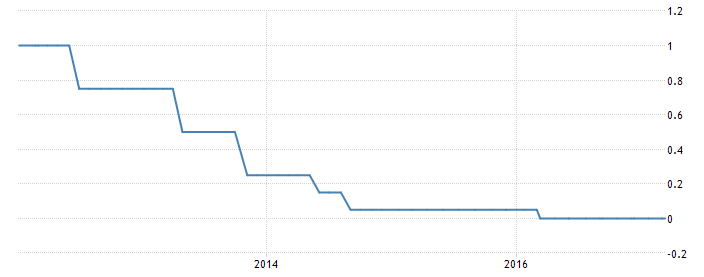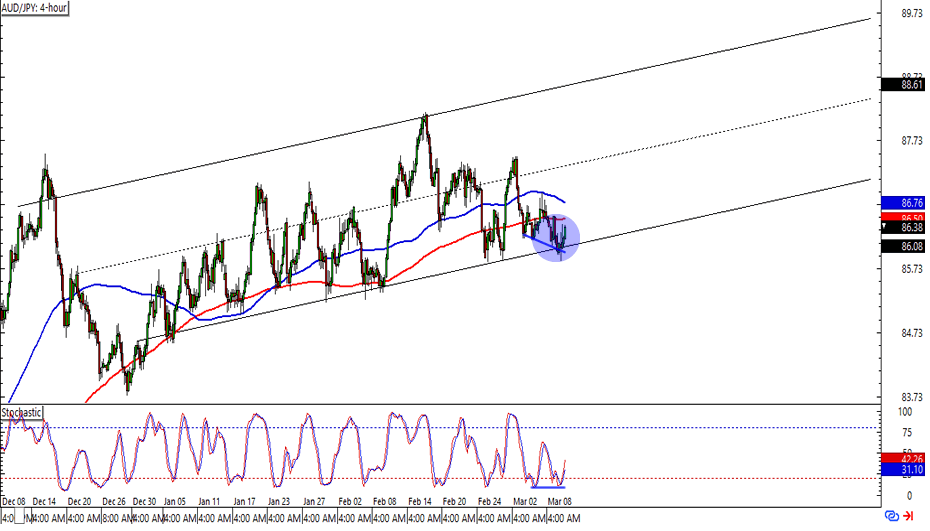Daily Insights Report 10/03/17
- 31 Mar 2017
10 Mar 2017
As it was almost certain, the ECB would likely keep its benchmark referencing rate at 0% and plans for quantitative easing remained unchanged. A look at how the interest rate in the Euro zone has changed in recent times can be seen below.

As a result of this decision, the Euro pushed up slightly and went to $1.06 before settling a bit lower. Still, the currency enjoyed a 0.4% gain as a result of the decision. Similarly, the Euro was up 1% against the Yen at JPY 121.64 and 0.4% up against the GBP at GBP 0.8692.
Commodities
– Brent oil settled at $52.19 a barrel after falling 1.7%. On the other hand, West Texas Intermediate (WTI) crude fell below $50. This is the first time it fell to this price since late November. Wednesday’s data revealed that US stockpiles had risen by 8.2 million barrels, this is more than four times what the market had predicted. Looking at historic data, oil prices have moved in the tightest range of prices for more than a decade.
– The price of gold fell briefly below $1,200 on Thursday afternoon for the first time since February. This comes at a time as US T-Bills yields rose ahead of the anticipated jobs report that will be released today. Data showing solid and stable job growth will strengthen the case for the Federal Reserve to increase the interest rate. The main reason why gold moves in the opposite direction from interest rates is that gold offers no yield. This may make it particularly unappetizing for investors, since the Federal Reserve is likely to bump up interest rates next week, which offers a yield.
United States Dollar (USD)
Employment Report (February)
The forecast for this data is 197,000 nonfarm jobs, and a unemployment rate of 4.7%. Job growth is not likely to show signs of weakness after nonfarm payrolls have been steadily increasing for four months. Employers are very hesitant to lay off staff, as this can be seen in the decreasing number of unemployment claims being seen in recent times. In fact, unemployment claims are near a 40 year low. These factors combined, can lead to faster wage growth, and keep an economy go through an economic expansion.
Euro (EUR)
France – Industrial Production (January)
France’s industrial production is likely to have increased 0.2% month-over-month in January after having fallen 0.9% in December. The figure may weaken in the coming month because the manufacturing PMI fell in February to 52.3 from 53.6.
While there are some improvements in the France’s manufacturing economy, some problems continue to remain, which can be seen through the data. Most of France’s trade balance is in surplus for only services related to tourism, and agricultural goods. Intermediate goods, are almost close to zero. It is believed that French entrepreneurs are hesitant to join the manufacturing industry because they are not sure if they can hire a skilled labor force.
Technical Analysis
AUDJPY
Looking at the four-hour chart of this currency pair we can see the pair is finding support at the 86.00 level. This is in the middle of the support channel. Looking at the stochastic chart at the bottom, one can see a divergence pattern. This would suggest that it may be profitable to enter a trading position. The trading position should be with a long trade strategy that would be aim for the currency pair to reach 88.50.


